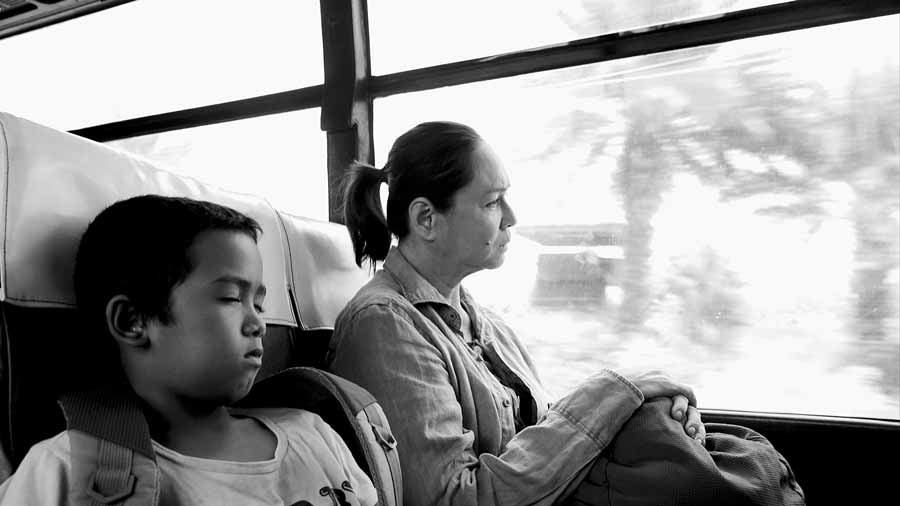
Aida: From another aspect, I thought that Diaz is doing "new music". It feels like he has been doing a long live and we are watching it. It requires physical fitness to do a long performance, as well as techniques. Having that technology, he can use his transcendental skill but he does not do it quite often. He does not take definitive cuts. Uneasy feeling. It's quiet but it's ferocious.
Kobayashi: The meaning of music is different from what you say, but as long as I have been watching that long take, a certain wave continues for a long time, it seems to have been put on it, and gradually It's going to get pleasant. It is said that constant rhythm is kept engraved.

Aida: By echoing the same sound and sounding the same phrase, it appeals to some human emotions. He is trying to play sustainable music. I just guess something should keep ringing in scene after scene. There is no sound and music is not flowing. However, the scene itself sings and dances. I feel the place or situation is singing and dancing.
Kobayashi: There are scenes they actually dance. For example, the cut that a person is dancing under the light behind the darkness is moving.
Aida: I don’t know what that emotion is. People dance and that’s what it takes.
Kobayashi: Although music is not played, there are some scenes that the characters sing. This can also be seen in other works such as "Mula sa kung ano ang noo/2014”. The singing scenes usually project the mind of that person. But Diaz did not take it that way. He does not draw feelings together.

Aida: It is amazing not to go to the mental image. I said music, but it is rather “songs” in Diaz. "Songs" are not about meanings. In the movie, the long "song" is kept singing forever. "Songs" are what shake our hearts, and it’s emotion. That’s why this movie makes us shiver.
Kobayashi: As far as the story is concerned, for example, if it is a movie of クリント・イースト・ウッド Clint Eastwood, fulfilling own justification is described in a simple and honest way. Here, the main character has his own righteousness to "take revenge" and before that, he does "good deed." On the other hand, what is going to happen is described by Diaz with "derivative relationship”.

Aida: Angelopoulos(テオ・アンゲロプロス Theo Angelopoulos) that came out earlier flows in history and in times. Diaz depicts a social background as well, and at first glance it looks like that, but it is completely different. Angelopoulos is trying to draw the whole. Diaz is trying to draw pieces. It may seem vertical, but it is rather about "derivate relationship" = horizontal connection. Something like a shelter should have been there, and it is kept removed. It seems that the roof of the Tokyo Dome suddenly disappears.
Kobayashi: Then pieces last.
Aida: Still, there is no feeling that it has been thrown away. It is not cold, but gentle. Diaz would not want to be told such a thing, but he is a "violent, but gentle director.”
“Ang Babaeng Humayo"(2016 Philippines)
Director /Screenplay/Capture/ Edit: Lav Diaz
Cast: チャロ・サントス・コンシオ Charo Santos-Concio /ジョン・ロイド・クルズ John Lloyd Cruz /マイケル・デ・メサ Michael De Mesa
From Saturday, October 14th, the Theater Image Forum and other nationwide road shows
http://www.magichour.co.jp/thewoman/